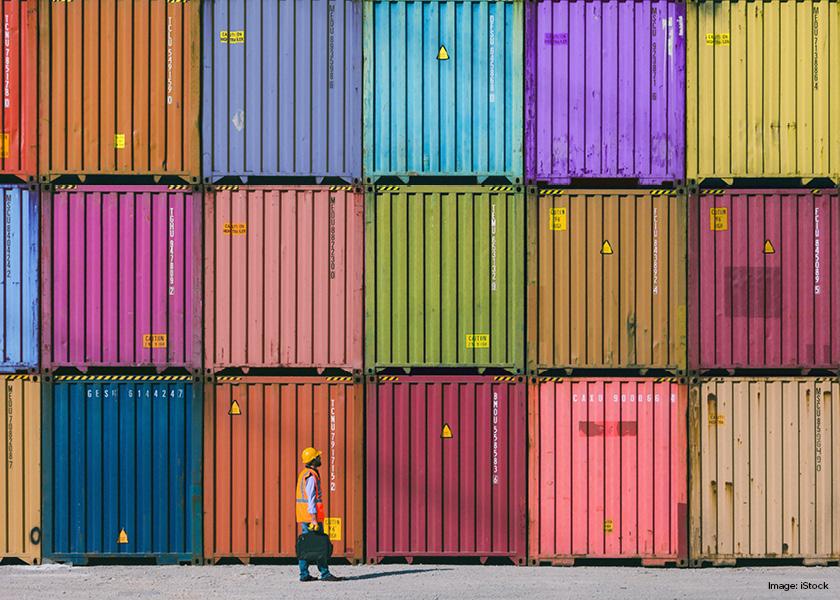Will The USDA Pop-Up Site Solve The Clogged Ports Issue?

Clogged ports amassed with shipping container vessels have captured news headlines since COVID-19 slammed the global supply chain.
Earlier this week, USDA announced a partnership with the Port of Oakland to ease congested ports and supply chain issues through a 25-acre pop-up site dedicated to agricultural companies for container filling purposes.
Following the pop-up announcement, various politicians have debated whether it will add further headache or relief.
Empty Opportunities
Rep. John Garamendi (D-Calif.) says the USDA partnership with the Port of Oakland “isn’t going to solve the problem” because shippers deliver product to the U.S. and leave ports with empty containers. He says ocean carriers currently have an exemption from antitrust laws that will continue to allow them to leave ports with empty containers “until there is a law in place that says you can’t do it.”
USDA Secretary Tom Vilsack responded saying his department’s efforts in the partnership are “not the only solution, but an important first step.” He says his work in communicating with ocean carriers has brought three major shipping companies back to the Port of Oakland, and he plans the same for the Ports of L.A. and Long Beach.
Pete Buttigieg, U.S. transportation secretary says the partnership will help American farmers and agricultural producers move their product to market “while also making better use of empty containers that are causing congestion at the ports.”
Ownership
According to White House Ports Czar John Porcari, only 2% of the global shipping market is U.S. flagged vessels. The three largest shipping companies running through California ports hail from China, Taiwan and Korea.
Garamendi sees the congested ports as international trade issue that requires the U.S. to put pressure on foreign countries. He says the U.S. Department of State has been in contact with these foreign countries, yet the port congestion has only expanded from 40% congestion to 70%.
Vilsack says his administration wants to do more for the port but hasn’t received a budget from the government to carry out further action. Regarding the pop-up, his team plans to use $5 million in funds from the Commodity Credit Corporation to:
• Pay 60% of the startup cost
• Provide pre-cool refrigerated shipping containers for perishables
• Offer $125 subsidy to offset logistic costs of moving containers to the pop-up
Weighing the Cost
Adjustments to truck-carrying capacity has been heavily debated as a solution to ports. Truck size and weight are established at the state level, with federal oversight.
Porcari says he has an ongoing discussion with the Federal Motor Carrier Safety Administration about increasing truck carrying capacity.
“This is not just a short-term issue related to the difficulties in exporting right now,” says Porcari. “This is a perennial issue that has be tackled in our infrastructure to accommodate those larger weights.”
Vilsack echoed Porcari saying ports and truck capacity are an “interesting” issue when considering the bipartisan infrastructure bill. He says as bridges and roads are repaired across the U.S., they can be strengthened to handle more weight and offer “greater resilience and efficiency in the long term.”
Read more:







